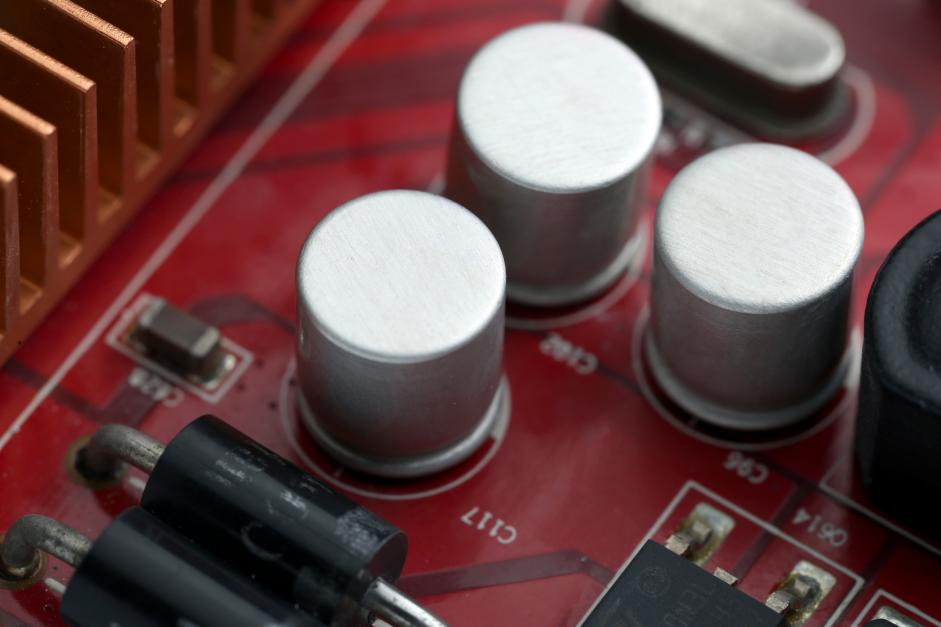Capacitors are vital components in electronic circuits, playing essential roles in energy storage, filtering, and timing applications. Understanding the capacitor symbol is crucial for anyone involved in electronics, whether you’re a hobbyist, student, or professional engineer. In this article, we will delve deeper into the capacitor symbol, its variations, significance in circuit diagrams, and practical applications. As a reliable electronic components distributor, Ersa Electronics will provide variety of capacitors like Aluminum Electrolytic Capacitors,
Tantalum Capacitors, Film Capacitors, and so on for your inquiry.
What is a Capacitor?
Before we discuss the capacitor symbol, let’s briefly define what a capacitor is. A capacitor is an electronic component that stores electrical energy in an electric field. It consists of two conductive plates separated by an insulating material known as a dielectric. When voltage is applied across the plates, an electric field develops, allowing the capacitor to store energy. This stored energy can then be released when needed in a circuit.
The Capacitor Symbol Explained
The standard symbol for a capacitor consists of two parallel lines that represent the conductive plates. The distance between these lines indicates the dielectric material separating them. The simplicity of this symbol makes it easily recognizable in circuit diagrams.
Basic Capacitor Symbol
Fixed Capacitor: Represented by two parallel lines with no additional markings. This indicates a constant capacitance value.
Fixed Capacitor Symbol

Variations of Capacitor Symbols
Different types of capacitors have unique symbols to indicate their specific characteristics and functionalities:
Variable Capacitor: This symbol includes an arrow or a curved line, signifying that the capacitance can be adjusted manually or through a mechanism.
Variable Capacitor Symbol
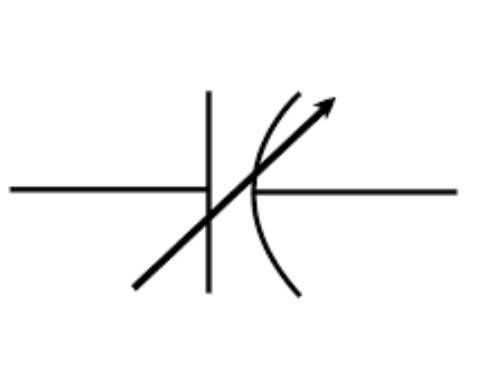
Polarized Capacitor: Typically shown with one straight line and one curved line. The straight line represents the positive terminal, while the curved line indicates the negative terminal. Polarized capacitors must be connected in the correct orientation to function properly.
Polarized Capacitor Symbol
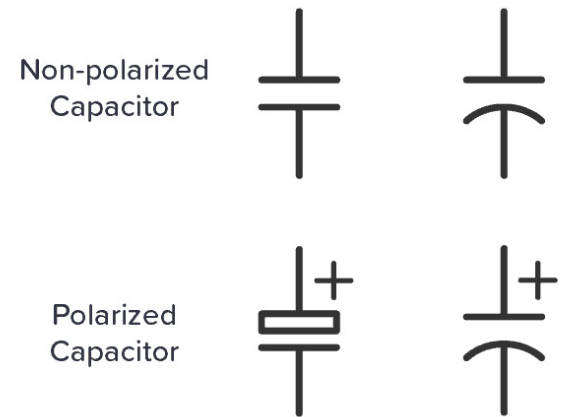
Supercapacitor: Often depicted similarly to regular capacitors but may have additional markings (like multiple parallel lines) to denote its high capacitance and rapid charge/discharge capabilities.
Supercapacitor Symbol
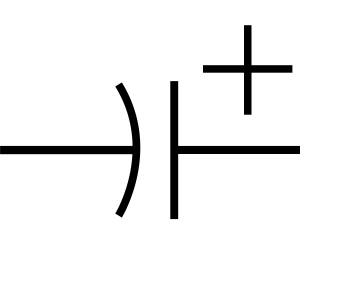
Tantalum Capacitor: This type of capacitor is often represented by a specific symbol that includes a dot or other distinguishing features to indicate its unique properties.
Tantalum Capacitor Symbol
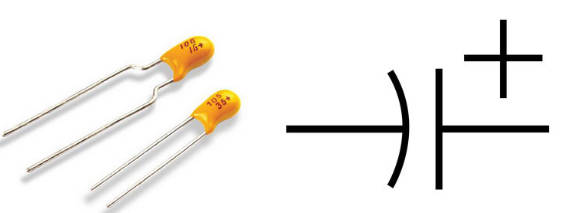
The Meaning Behind the Symbols
Understanding what each component of the capacitor symbol represents is crucial for interpreting circuit diagrams effectively:
- Parallel Lines: These represent the conductive plates that store electrical charge.
- Curved Line: If present, this indicates that the capacitor is designed for alternating current (AC) applications.
- Polarity Markings: For polarized capacitors, markings such as “+” or a curved line indicate which terminal is positive and which is negative.
Importance of Understanding Capacitor Symbols
Recognizing and understanding capacitor symbols is vital for anyone involved in electronics design or repair for several reasons:
Correct Circuit Assembly: Misinterpretation of these symbols can lead to incorrect assembly of circuits, potentially causing devices to fail or perform poorly.
Troubleshooting: Understanding capacitor symbols helps in diagnosing issues within electronic devices by allowing you to identify faulty components quickly.
Design Efficiency: Familiarity with various capacitor types and their symbols enables more efficient design processes, as engineers can select appropriate components based on their schematic representations.
Safety Considerations: Knowing how to read capacitor symbols can help prevent accidents related to incorrect connections, especially with polarized capacitors that may cause damage if connected improperly.
Practical Applications of Capacitors
Capacitors are used in various applications across different fields:
Power Supply Filtering: In power supply circuits, capacitors smooth out voltage fluctuations and provide stable output.
Timing Circuits: In conjunction with resistors, capacitors can create time delays in circuits used in timers and oscillators.
Signal Coupling and Decoupling: Capacitors are used to couple AC signals while blocking DC components or decoupling signals from noise.
Energy Storage: Supercapacitors are increasingly used for energy storage in renewable energy systems due to their high capacitance and fast charging capabilities.
What are the unique symbols for polarized capacitors?
Polarized capacitors are essential components in electronic circuits, and their symbols are designed to clearly indicate their polarity. Understanding these symbols is crucial for proper circuit assembly, as connecting a polarized capacitor incorrectly can lead to circuit failure or damage. The unique symbols for polarized capacitors play a vital role in electronic schematics, conveying essential information about component functionality and characteristics. Familiarity with these symbols enhances your ability to design and troubleshoot electronic circuits effectively. By understanding the various representations of polarized capacitors, you will be better equipped to create reliable electronic systems that function as intended.
How do supercapacitor symbols differ from regular capacitor symbols?
Supercapacitor symbols differ from regular capacitor symbols primarily in the way they depict the component’s unique characteristics. A regular capacitor symbol typically consists of two parallel lines, representing the plates, separated by a small gap. This symbol is simple, denoting a standard capacitor without any extra attributes for enhanced storage capacity. Regular capacitors store electrical energy as an electrostatic field and are commonly used in circuits to filter or stabilize voltage.
In contrast, supercapacitor symbols often include an additional vertical line or marking near one of the parallel lines. This extra line represents the capacitor’s double-layer structure, which enables higher energy storage. Supercapacitors, sometimes called ultracapacitors, store energy electrostatically and through a small amount of electrochemical reaction, allowing for faster charge and discharge cycles and greater energy density. This difference in symbol highlights the supercapacitor’s enhanced performance and specialized applications, such as in backup power systems or rapid energy release needs.
Conclusion of Capacitor Symbol
The capacitor symbol plays a crucial role in electronic schematics, providing essential information about component functionality and characteristics. Whether you’re designing complex circuits or troubleshooting existing ones, mastering these symbols will significantly enhance your skills and understanding of electronics. By familiarizing yourself with various types of capacitors and their representations, you will be better equipped to create effective and reliable electronic systems.
Understanding these concepts not only improves your technical knowledge but also empowers you to innovate within the field of electronics. So next time you encounter a circuit diagram featuring capacitors, you’ll be able to interpret their symbols confidently and apply that knowledge effectively!
Stay in touch to get more news & updates on Gossips!

